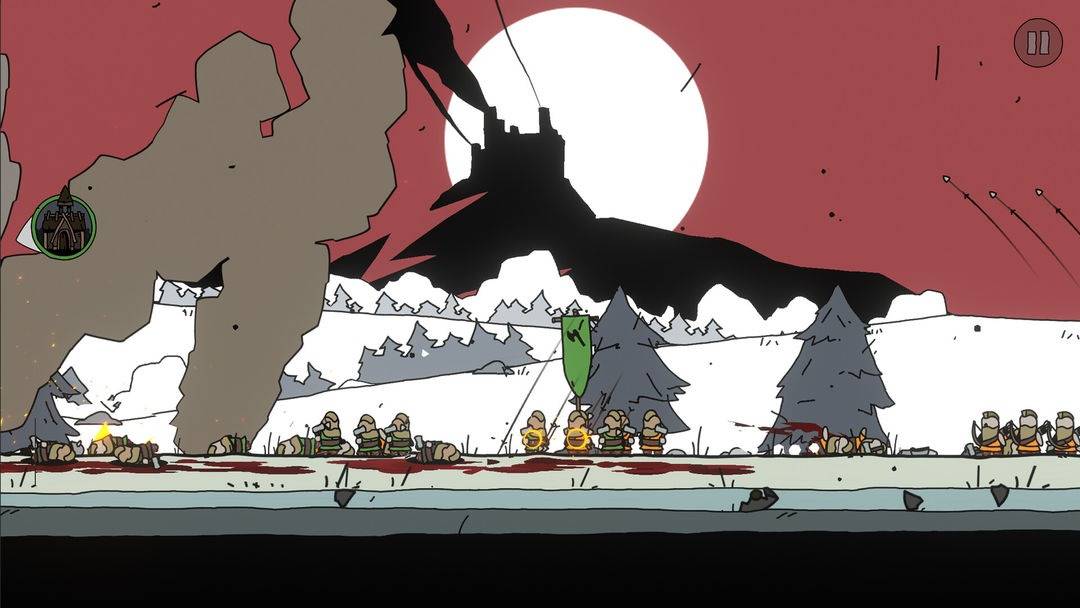Parabellum: Siege of Legends Review: Side-Scrolling Strategy Redefines ‘Kingdom-Like’ Action on Mobile
Popular Now
 FIFA 23
FIFA 23
 R.E.P.O
R.E.P.O
 Stumble Guys
Stumble Guys
 League of Legends
League of Legends
 Call of Duty
Call of Duty
 Free Fire Max
Free Fire Max
 Free Fire
Free Fire
 Geometry Dash
Geometry Dash
 Poppy Playtime
Poppy Playtime
 Black Myth: Wukong
Black Myth: Wukong  A new contender has emerged in the competitive arena of mobile strategy games. Parabellum: Siege of Legends, officially released on both iOS and Android, is making headlines for its distinctive blend of city-building, real-time strategy (RTS), and a gameplay loop that is immediately evocative of the hit Kingdom series. Developers are promising a fresh, detailed take on the 2D strategic genre, offering players the chance to not just manage resources but actively command their forces in epic battles of territorial expansion and defense. This release aims directly at the lucrative market for mid-core mobile gaming, utilizing high-value search terms like “best mobile RTS 2025” and “kingdom-building games for mobile.”
A new contender has emerged in the competitive arena of mobile strategy games. Parabellum: Siege of Legends, officially released on both iOS and Android, is making headlines for its distinctive blend of city-building, real-time strategy (RTS), and a gameplay loop that is immediately evocative of the hit Kingdom series. Developers are promising a fresh, detailed take on the 2D strategic genre, offering players the chance to not just manage resources but actively command their forces in epic battles of territorial expansion and defense. This release aims directly at the lucrative market for mid-core mobile gaming, utilizing high-value search terms like “best mobile RTS 2025” and “kingdom-building games for mobile.”
The game’s core premise casts the player as a hero tasked with establishing a thriving city, safeguarding its riches, and aggressively attacking surrounding enemies. This dynamic creates a compelling balance: one moment you are meticulously developing your economy; the next, you are leading an army to crush a rival kingdom.
 The Marriage of City Builder and War Strategy: Parabellum Mechanics
The Marriage of City Builder and War Strategy: Parabellum Mechanics
The standout feature of Parabellum: Siege of Legends is its attempt to fuse a minimalist, side-scrolling management style—the “Kingdom-like” action—with the tactical demands of an RTS game. Unlike the Kingdom series, which focuses on indirect command, Parabellum reportedly allows players to control their army in a more traditional real-time combat setting, adding a critical layer of player agency.
Core Gameplay Pillars:
- Economic Development: Players must establish a robust economy around their central dungeon. This involves building fields, mills, and shops, constantly expanding city borders to produce more resources. Careful financial management is paramount to stave off both starvation and bankruptcy.
- Strategic Defense: The game emphasizes building powerful fortifications. Players must erect imposing walls and watchtowers to protect their city from constant invasions. This tower defense element requires anticipation and adaptation to enemy tactics, making border security a key tactical challenge.
- Army Command and Expansion: Recruiting and training a diverse array of troops, from elite infantry to sharp archers, forms the backbone of the military. The hero, controlled by the player, leads troops into battle, where tactical moves, formations, and ambushes are decisive in overthrowing enemy kingdoms.
- Narrative Depth: The campaign features a story of betrayal and the quest for power, where players will inhabit multiple characters across three imposing nations: the highly religious Highlands, the industrial Sultanate of Basse-Terre, and the warring Ice Lands.
This dual focus on meticulous resource management games and hero-led strategy appeals directly to players searching for a challenging, long-term mobile game experience. The key challenge, as seen in early player feedback, appears to be the controls—specifically, the scrolling and unit selection, which some users have described as “clunky” or “unintuitive” (Source: Reddit/iOSGaming, Reddit/AndroidGaming). This is a critical area for developers to address in upcoming patches to ensure the deep strategy isn’t hampered by the user interface on smaller touchscreens.
 Market Impact and the Future of 2D Mobile Strategy
Market Impact and the Future of 2D Mobile Strategy
The launch of Parabellum: Siege of Legends enters a highly competitive but profitable mobile gaming landscape, where high CPC keywords related to 4X strategy and real-time tactics are constantly in demand. The game’s side-scrolling 2D artistic direction is unique in a world dominated by top-down 3D city builders like Rise of Kingdoms and Lords Mobile, drawing visual comparisons to titles like The Banner Saga and Ratropolis (Source: Reddit/iOSGaming).
By leveraging the established popularity of “Kingdom-like” mechanics and incorporating real-time unit control, Parabellum is carving out a niche. The emphasis on detailed troop training and varied missions (over 10, according to the Google Play description) promises a substantial amount of content beyond the initial release. For players seeking an offline strategy game—as the title is listed with an offline status (Source: YouTube Gameplay)—it offers a significant advantage in a market increasingly reliant on constant connectivity.
Strategic Advantages in the Mobile Space:
- Genre Fusion: Blending economic-based city-builder with tactical RTS combat.
- Art Style: Unique 2D visuals reminiscent of high-quality indie titles.
- Content Longevity: Multiple playable heroes and a rich, multi-nation storyline provide deep replay value, attracting players who prioritize long-term engagement.
The success of Parabellum will be a litmus test for how well complex strategy games can translate to the mobile platform without sacrificing tactical depth. Addressing the initial feedback on controls will be essential for ensuring a smooth, premium experience that justifies its high production value and captures the core audience of strategy game enthusiasts. For now, it represents one of the most intriguing and ambitious new mobile releases of 2025, offering a fresh siege experience for aspiring mobile warlords.
Strategic Tip: Focus initial resources on wall upgrades before training high-tier troops. A strong defense ensures your economy can mature unimpeded by early enemy rushes.
Disclaimer: This article is a critical review based on the announced features and initial public reception of Parabellum: Siege of Legends. The game’s performance and long-term viability will depend on the developers’ commitment to addressing community feedback and delivering continuous content updates.










 The Marriage of City Builder and War Strategy: Parabellum Mechanics
The Marriage of City Builder and War Strategy: Parabellum Mechanics Market Impact and the Future of 2D Mobile Strategy
Market Impact and the Future of 2D Mobile Strategy